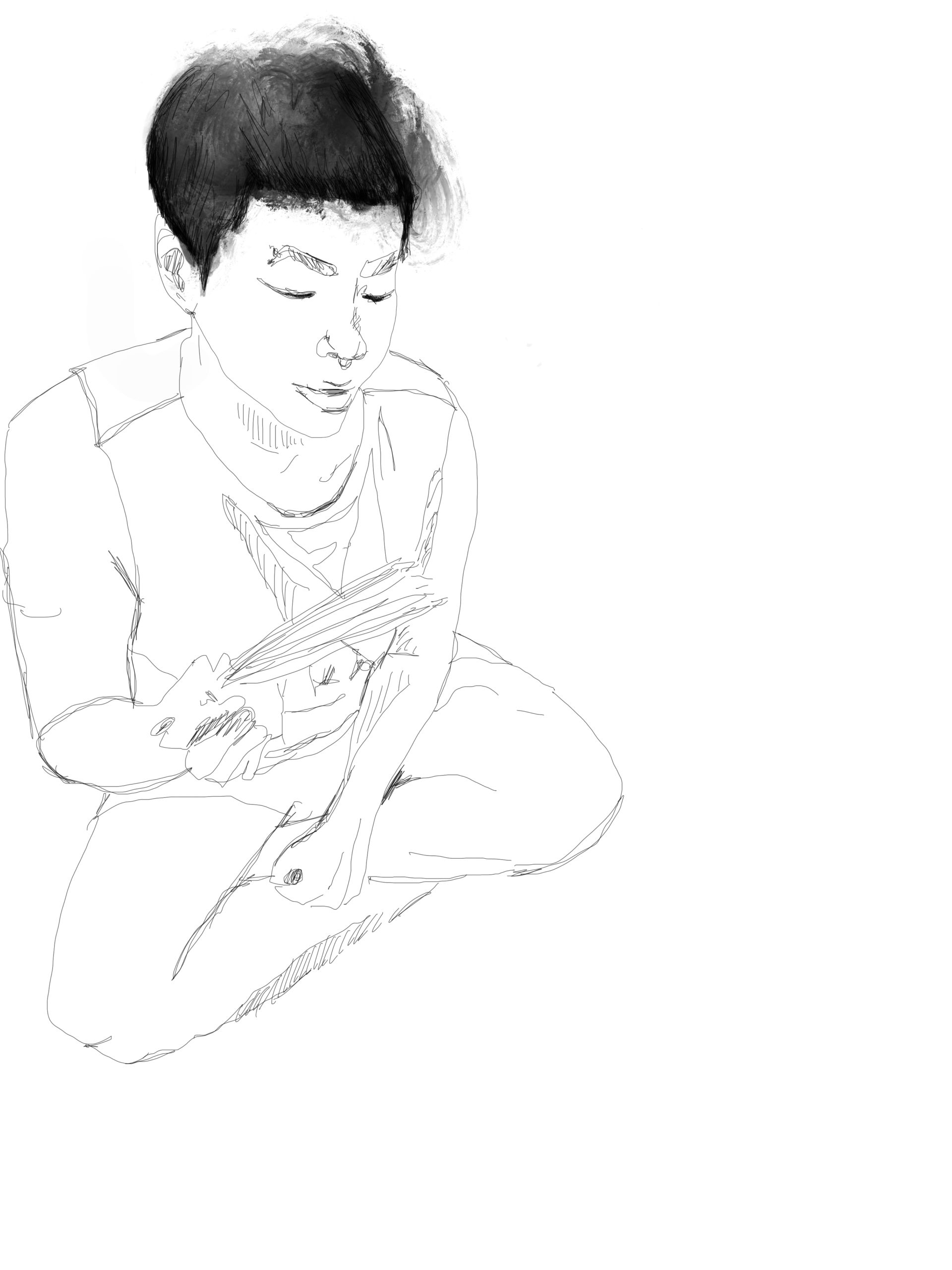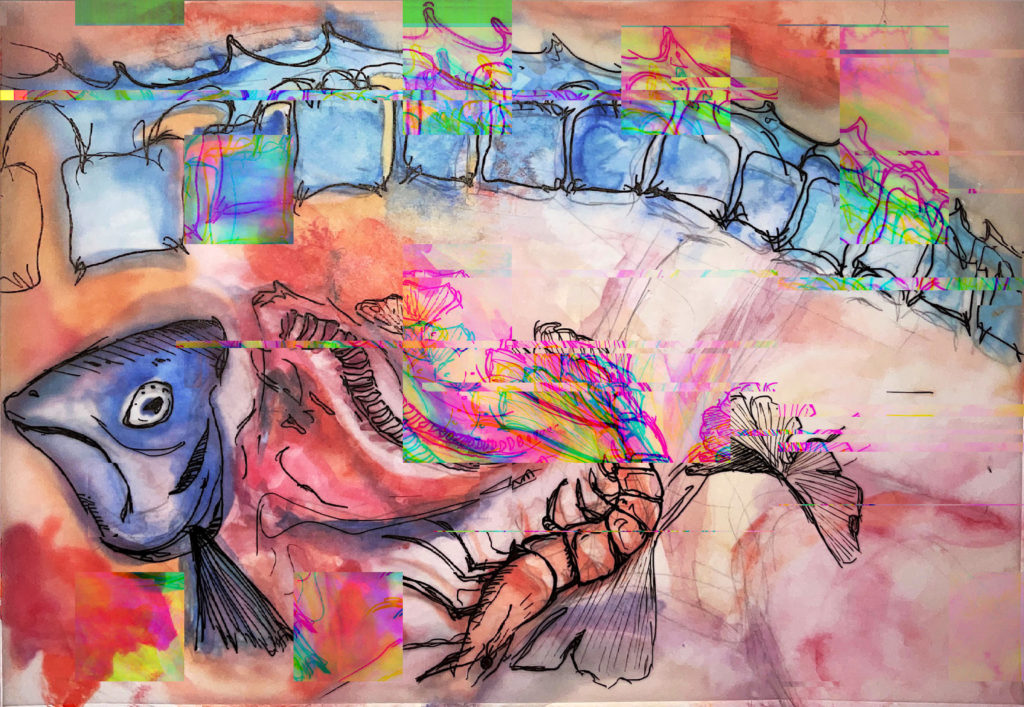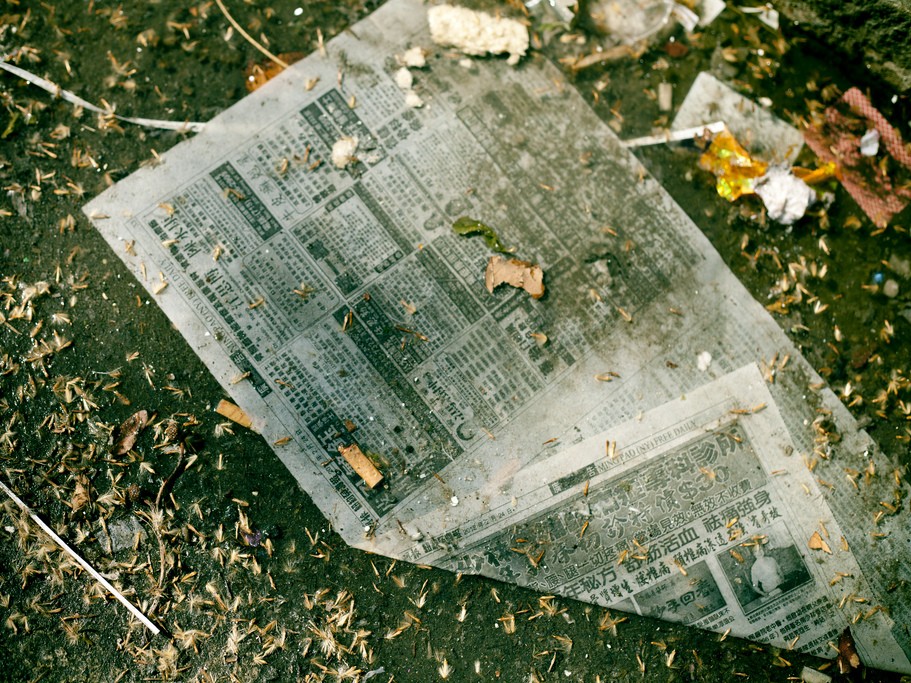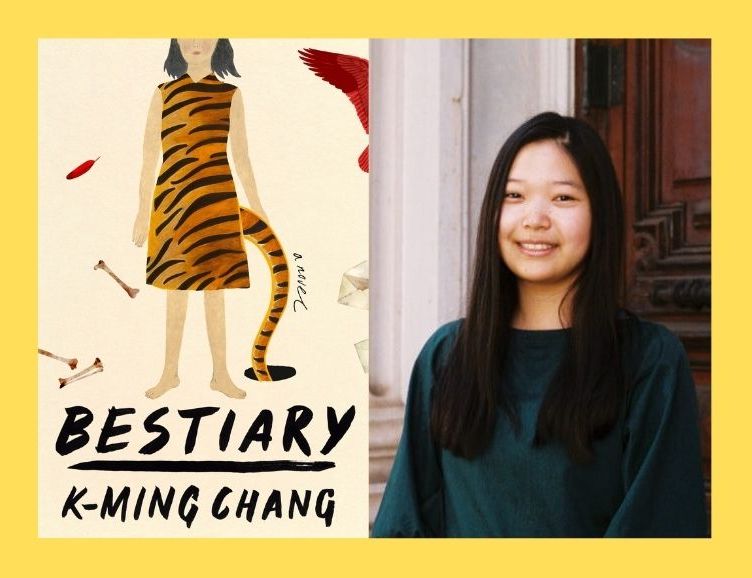On the “impossible archive,” the historical and future queer imaginary of a “lesbian cultural archive” and Grandma’s Girlfriends 阿媽的女朋友

July 27, 2021
Editor’s Note: The following is part of a notebook Queer Time, co-edited by Ta-wei Chi and Ariel Chu, which gathers contemporary queer Taiwanese literature in translation. To read the full Queer Time collection, visit its home here.
By Eno Pei Jean Chen 陳佩甄
Assistant Professor, Graduate Institute of Taiwanese Literature
National Chengchi University, Taiwan
Translated by Jeremy Tiang
For the Taiwanese queer rights movement, the landmark development of 2019 was the May 24 passage of the “Act for the Implementation of Judicial Yuan Interpretation No. 748,” which made Taiwan the first country in Asia to legalize equal marriage. This highly visible event was bound to be recorded and to enter the LGBTQ community’s collective memory. What caught my attention, though, was an exhibition titled Revisiting the History of Tongzhi Stigma: An Exhibition of Archive and Creation[1], which was held on October 26, the same day as Gay Pride 2019. This exhibition featured the construction of the “Queer/Tongzhi Archive” and reflections on queer and tongzhi history. That same year, a team of volunteer oral historians from the Taiwan Tongzhi LGBTQ+ Hotline Association edited the interviews they’d been compiling over the previous eight years, which were then published as Grandma’s Girlfriends: The Splendid Youth of Elder Lesbians in 2020—exactly a decade after the release of an equivalent volume of queer men’s oral histories, The Old People’s Rainbow Bus: Youthful Recollections From Twelve Older Gay Men.
These two queer cultural events awakened echoes of the past, rewriting stigma and restoring memories that had been erased. Yet the vigorous historicism manifested through the archive has its own deep context and revisionist angle, incorporating concepts such as the impossibility of the queer archive and reflections on queer history. I will begin by discussing the “impossible archive,” and then consider the historical and future queer imaginary as they manifest in a “lesbian cultural archive” and Grandma’s Girlfriends, as well as the inter-referencing between the two projects.
Archive Impossible
As much as and more than a thing of the past, before such a thing, the archive should call into question the coming of the future.
—Jacques Derrida, Archive Fever: A Freudian Impression
The American queer culture scholar Ann Cvetkovich has said with regard to her research analyzing queer work and the archive, “that gay and lesbian history even exists has been a contested fact, and the struggle to record and preserve it is exacerbated by the invisibility that often surrounds intimate life, especially sexuality. Even the relatively short history (roughly ‘one hundred years’) of homosexuality as an identity category has created the historiographical challenge of not only documenting the wide varieties of homosexual experience but examining documents of homophobia along with earlier histories of homoeroticism and same-sex relations.” Cvetkovich quotes from Derrida’s Archive Fever and points out that “Derrida presses psychoanalytic approaches to memory to the conclusion that an archive is fundamentally impossible.” Derrida believes this impossibility stems from an inability to record, particularly the traumatic experience of memory loss, which cannot be stored even in the unconscious. However, Cvetkovich is concerned with the existence and history of sexual minorities, who must contend with their own inner wounds alongside misinterpretation and deliberate erasure from the historical record.
The Taiwanese legal history scholar Shih-Fang Lin has painstakingly combed through archived documents from the Japanese occupation of Taiwan in order to construct a history of “intimate relationships between women” that would otherwise have been “frequently erased from the record, or simply assumed not to exist in the first place.” Similarly, the creators of “Revisiting the History of Tongzhi Stigma” constructed a map of “The Stigmatized City,” connecting individual experiences of erasure with these sites of stigma. Most important among these locations are the T bars, or tomboy bars, that are closely connected to the lives of queer women, and that mainstream society is constantly targeting as a site of voyeurism or spectacle. Although many of these establishments have since gone out of business and disappeared, they are a rare public cultural memory for queer women, and the incidents of their being secretly photographed and outed in these venues[2] are a prime example of experiences contained in “the lesbian cultural archive.”
All the research mentioned above consists of attempts to retrieve overlooked elements of the archive, with the aim of “proving” the existence of the queer community’s past experiences. This trawl through historical material resonates with the “archive drive” observed by the Indian gender researcher Anjali Arondekar and referenced by Derrida. What Derrida calls the “mal d’archive” also manifests itself in the issue of inadequate archives (en mal d’archive). Arondekar notes that as scholars of colonial Indian history compete to excavate material in order to justify their research (and their subjects), “the process of ‘queering’ pasts has been realized through corrective reformulations of ‘suppressed’ or misread colonial materials.”
At the same time, Arondekar points out a potential issue: “implicit in this rethinking, however, is the assumption that the archive, in all its multiple articulations, is still the source of knowledge about the colonial past.” In other words, the teleology of knowledge production continues to restrict our understanding of the historical method to the uncovering of artifacts and information.
Ann Stoler, who studies colonial history and gender, urges her fellow academics to pivot from the research method of “archive as source” to “archive as subject,” asserting that “scholars should view archives not as sites of knowledge retrieval, but of knowledge production, as monuments of states as well as sites of state ethnography.” In light of this reminder, Arondekar does not participate in this exhumation of lost items or records, but rather the “reading without a trace” mentioned by postcolonial theorist Gayatri Spivak: “not a mandate against archival work, but rather a call to interrogate, without paralysis, to challenge, without ending the promise of a future.”
Where in the World are the Lesbians?
Ta-wei Chi, a scholar of queer Taiwanese literature, states in A Queer Invention in Taiwan: A History of Tongzhi Literature that the history of queer literature in Taiwan has been fabricated, an idea that draws upon the American queer theorist David M. Halperin’s view that the existence of queer history is not a given, nor is it passively waiting to be discovered. Rather, it is invented and added to by generation after generation. I believe that this historical perspective is displayed in Grandma’s Girlfriends and “the lesbian cultural archive.”
The aforementioned archive was based on queer women’s magazines from the personal collections of the project’s members, including Love Happiness Confidence Zine (1993-1995), which was produced by the students and faculty of National Taiwan University, and Girlfriend (1994-2003)[3]. Due to the constraints of funding and time, the focus of the collection was 1990s lesbian culture in Taiwan, as well as rare recordings and less accessible cultural material. As a result, there are few currently active publications, reference books, or films within the two hundred items of the collection, which consist for the most part of books, music, and documentaries that are out of circulation or had never been released in the first place, plus evidence of organizations, websites, and physical spaces that have since vanished. Unlike other queer publications of the time, which were targeted at a more intellectual readership and focused on theoretical and literary topics, Girlfriend was devoted to the “quotidian lesbian lifestyle” and thus archived the lived experiences of a generation of queer women.
Similarly, Grandma’s Girlfriends aims to document the lives of queer women from a particular generation. In one chapter, an interviewee known as Old Bones publishes an essay titled “Smashing the Myth of Handsome Ts and Beautiful Femmes” in a 1994 issue of Girlfriend, triggering a massive reaction. In another, Xiaoyue, who was born in 1962, sees an advertisement for a T bar in the same magazine, and is inspired by that ad to set off on an adventure. There is a noticeable difference between these stories of older lesbians and the movements and publications of the 1990s. In the 1970s, for instance, the singer Huang Hsiao-Ning spent time in dance halls, American servicemen’s clubs, and gay bars, performing and accepting his identity as a T; meanwhile, Xiaoyue saw the terms “tomboy” and “po” (婆, here meaning “femme”) for the first time in Kuo Liang-hui’s novel Beyond the Two Types, which was serialized in China Times Weekly. From the 1990s, however, feminism had rejected the division of T and po, believing this binary to be merely reproducing the rigid structure of heterosexuality, and so queer women began refusing to identify in this way, instead becoming differentiated by their generations, class, and cultural capital.
The oldest interviewee in Grandma’s Girlfriends is Ah Bao, who was born in 1938 and stands outside the T/po dichotomy, instead identifying as a “pants-wearer” (“chhēng-khò͘-ê” in Taiwanese). In the 1960s, the careers and sexual identities of chhēng-khò͘-ê were closely linked to the commercialization of Taipei’s Dadaocheng district. They frequently spent time by the bridge on the edge of Dadaocheng, and so acquired the nickname the Thirteen Teddy Girls of Qiaotou. Small Talk (2017), which won a Teddy Award for Best Documentary, is about a single mother who happens to be a T and a chhēng-khò͘-ê. The subject of this film, “T Mama,” confirmed that this group of chhēng-khò͘-ê used to be well-known. When speaking about her gender identity, T Mama, empowered by this group, said, “I’m not scared. It’s not like I’m the only one who’s this way—there’s a big group of us by Taipei Bridge.” The lesbian cultural archive has marked the bridge, a restaurant, and other spaces on the “Stigmatized City” map and regards the chhēng-khò͘-ê and the Thirteen Teddy Girls of Qiaotou as artifacts.
The above narratives, produced by different generations through the gathering of oral histories, the publication of books, the making of documentaries, and the creation of archives, demonstrates “the archive as source/subject” as a method of writing history. Although Girlfriend magazine itself is a static set of materials, its circulation among the community has allowed it to become the foundation of a cultural memory bank curated by the next generation. The magazine also provides synchronicity, linking various events that took place in the same time period. Even so, we see in Grandma’s Girlfriends that Girlfriend is bound by social class and culture, and thus not does not accommodate sufficiently diverse experiences of diachronic subjects across time. Therefore, Girlfriend becomes an “archive as subject” to be scrutinized. Besides, the valuable archival material of Ah Bao’s story in Grandma’s Girlfriends manifests itself not only through oral history, but also through various forms of cultural production, such as the documentary Small Talk. It connects queer memories of post-war Taiwan and challenges the hegemonic knowledge production stemming from the mainstream historical archive (reproductions in newspapers and other media).
The construction of the lesbian archive and the compilation of oral histories in Grandma’s Girlfriends are both examples of queering history through the “archive as subject,” allowing participants, activists, and scholars to collaborate and maximize their potential. These initiatives also ensure the continuation and preservation of queer experience and intangible memories, bringing the present and future together. This work of queering envisions not only a rehabilitation of the histories of sexual minorities, but also the creation of community and a space for more diverse histories to be written and imagined.
Notes
1. Revisiting the History of Tongzhi Stigma: An Exhibition of Archive and Creation, as the title suggests, centered on experiences of stigma. Five artists working in photography, theater, text, and sound, chosen regardless of sexual orientation or gender, created work based on existing literature and historical research. These works were to be presented along with various texts on the day of Pride 2019, after the legalization of same-sex marriage. The exhibition was preceded by three seminars on “Lesbian Culture in the 1990s,” “Older Queer People,” and “In the Same Boat: The Chinese LGBTQ+ Cultural History Project/Archive,” as well as guided tours of 228 Peace Memorial Park and the site of a former T-Bar on Linsen North Road, Taipei. The programming also included closed-door workshops with stimulating discussions among the creators, which were developed into the “Lesbian Cultural Archive” the following year. The word “tongzhi,” which means “comrade,” has in recent years been adopted by communities who identify as sexual minorities or who fall outside of heteronormativity. “Tongzhi” sometimes overlaps with the term “queer.”2. On March 18, 1992, TTV News World Report, hosted by Catherine Chang, produced a segment on “The Rapid Rise of Lesbians.” This segment featured journalist Chu Mei-feng secretly filming Haven Bar with a pinhole camera, thus exposing its patrons and staff. Another clip had an interview that insinuated that the singer Pan Mei Chen was a lesbian. On another occasion in 1998, then-CTS reporters Xie Jie-Xiu and Rong Chao-Bei covertly recorded an establishment and aired the footage on the nightly news as part of a “Special Investigation” item titled “Lesbian Bars: An Alternative Paradise” that led to the closure of the bar, sparking protests from the queer community.
3. Girlfriend published 35 bimonthly issues between October 5, 1994 and April 2003. It was created and distributed by Between Us, Taiwan’s first queer women’s organization, which was established on February 23, 1990 and eventually had 4,000 members of all ages and walks of life.



